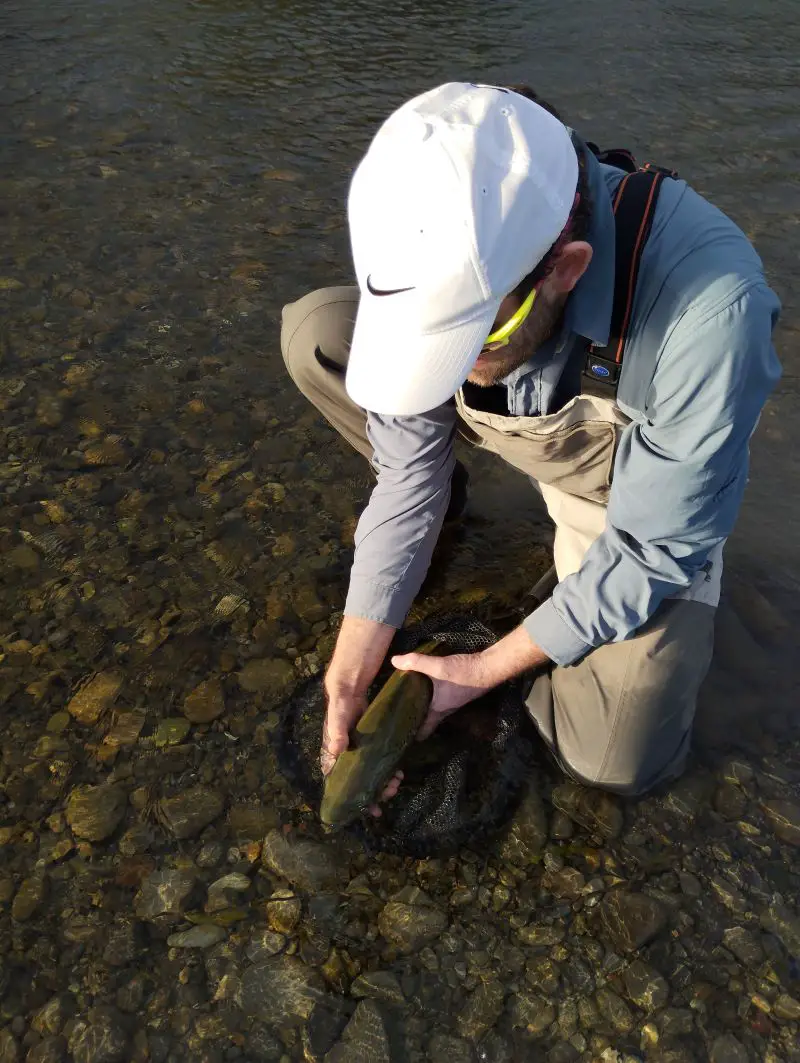I learned to trout fish in the pristine mountains and lakes of deep in the New Zealand. These trout rivers, renowned for their trophy trout, can see intense angling pressure which belies their remote location.
The more popular the river, the more busy the stretch the more something becomes apparent. A significant portion of the large brown trout were lying doggo on the bottom of their pools. With white smudges, strongly resembling hand prints on their skin.
Others will sulk in the shallows. Their skin a dark brown but the prints still clearly visible. These doggo trouts prove to be almost impossible to catch. In my early days of fly fishing, I at times emptied my fly box, casting various flies and combinations at them. They were simply in no mood to feed. In the rare occasion, I hook one they are normally only a husk of the fish they once were.
I fully support catch and release angling, but we must do it in such a way to minimise the considerable stress the trout will be be suffering. Getting caught, fought and landed must put the trout through hell. What even worst, is getting lifted out of the water into an extremely hostile environment, squeezed firmly and being forced to pose for multiple photos.
My three simple rules for photographing trout
1) Be prepared
Have your camera easily and readily available. If you are planning on taking photos, it should be immediately available. It is not good enough to spend five minutes running back to the car to retrieve it, or fluffing around changing lenses or manual control to get the perfect composition.
None of that is acceptable. Pull your camera out, turn it on, take the photo. Prepare all photography equipment and settings before landing the trout. Do it even before the first cast.
I use to hang my water resistant Olympus OM-D around my shoulder. It was easy to whip it out and take a few shots. Todays smart phones make it even easier, they fit comfortably into a vest pocket.
2) Keep the trout in the water
The only time a trout wants to be out of the water is when it is leaping to catch a damsel fly. Any other time we should keep them wet. The best trout photos I have seen are all taken with the trout still in the photo.
While I do not own a waterproof camera. Some of the best photos I have seen are from beneath the waterline. The trout stays submerge the entire time. That is a great way to help minimise any distress the trout will be experiencing.
3) Minimise handling
If you must have a selfie with the trout you caught. Make it quick. Make sure your mate has the camera ready. With wet hands, lift the trout out of the water, pose, and submerge it again. Even in cold weather, trout gills can start suffering damage in other 15 seconds. I suspect hot weather is even worse.
Do not handle trout with dry skins or gloves. Both of these are worst at removing the layer of slime which protects the trout against infection. This video shows what happens to a Brook after being held with a tailing glove.
Do not squeeze the trout hard. They are not stress balls. Holding a trout too tightly can cause internal bleeding or even puncture organs.
Do not hold the trout the by gills. This is comparable to holding us by our lungs. It is a very sensitive area and any damage is nearly always fatal.
How long can trout survive out of water?
Several studies have looked at the effects of air exposure on trout mortality. One study by Schisler and Bergerson (1996), modeled the mortality rate for lightly hooked hatchery Rainbow Trout caught on a fly. In this experiment water temperature never exceeded 17c. Mortality was less than 3% at 180s, and 9% after 300s of exposure.
These numbers significantly increase when time out of water is combined with a prolong fight. With about a 8% Morality after 180s and over 30% morality at the five-minute mark. Basically, the harder the fight, the more urgent it is to keep a trout in the water.
Another study by Schreer et al. (2005) tried to simulate the effects of a 30 second fight, followed by air exposure for 30, 60 and 120 seconds. None of the Brook trout died. This shows that trout can survive several minutes out of the water when other variables are favorable.
Examples of good and bad trout photos
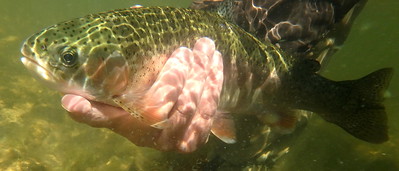
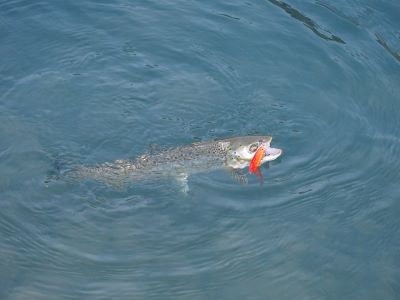
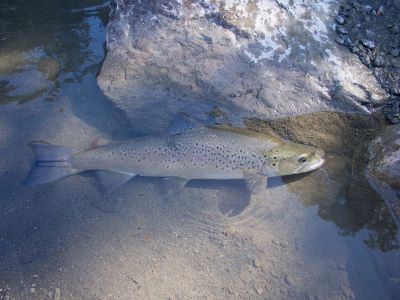
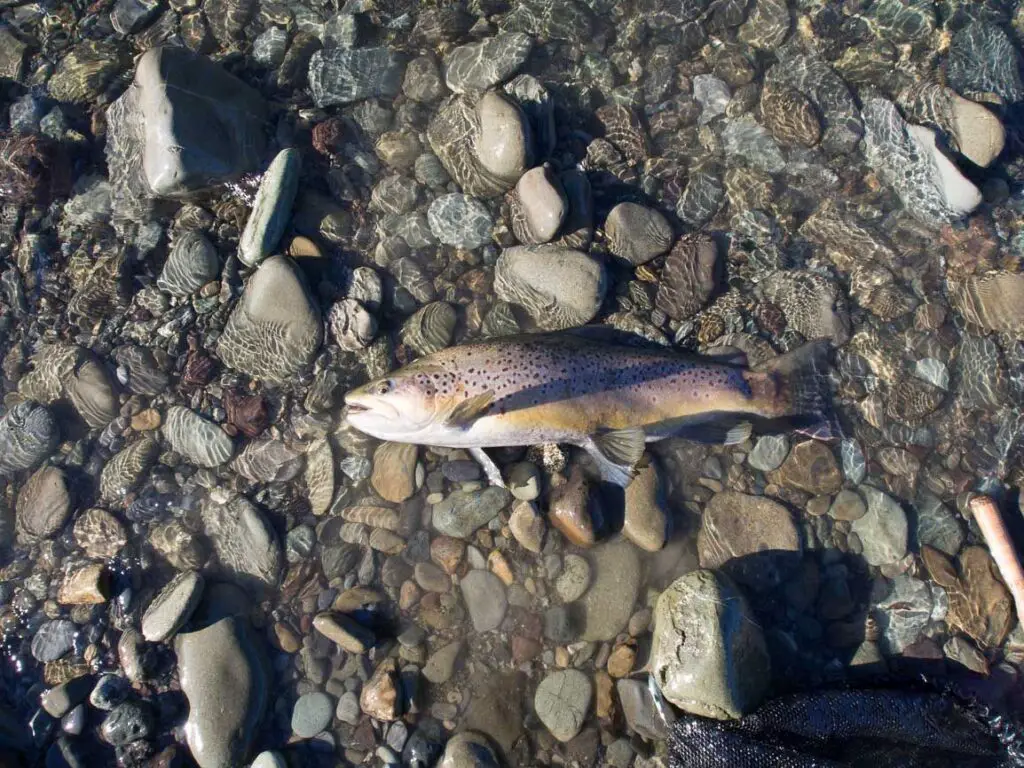
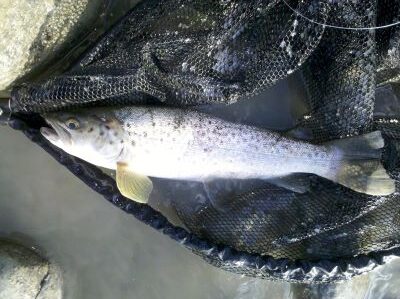
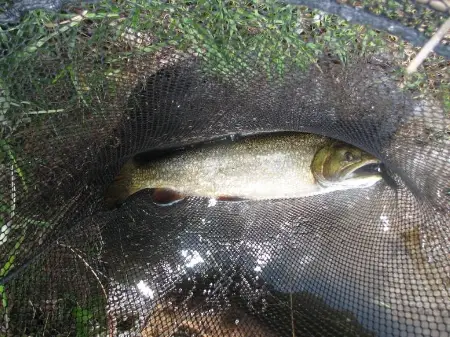
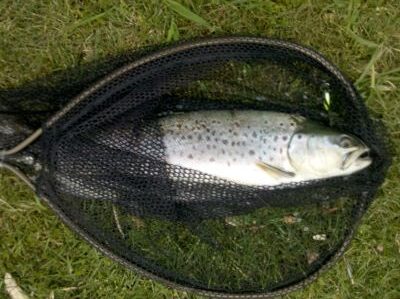
For further information, I suggest these studies.
Schisler, G. J., and E. P. Bergerson. 1996. Post-release hooking mortality of Rainbow Trout caught on scented artificial baits. North American Journal of Fisheries Management 16:570–578.
Schreer, J. F., D. M. Resch, M. L. Gately, and S. J. Cooke. 2005. Swimming performance of Brook Trout after simulated catch-and-release angling: looking at air exposure thresholds. North American Journal of Fisheries Management 25:1513–1517.

